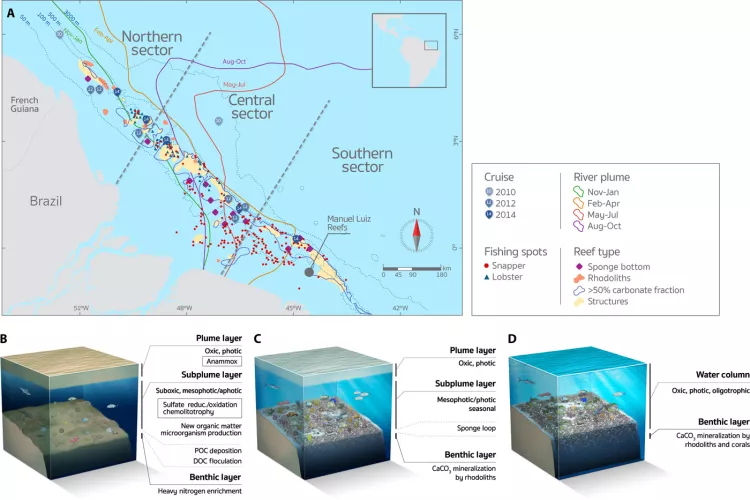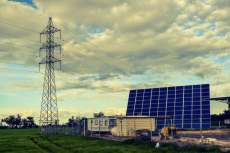Extensive reef system discovered at the Amazon River mouth
A 1000km (600-mile) long reef, which ranges from about 30-120m deep stretches from French Guiana to Brazil’s Maranhão state.
The existence of the reef have come as big surprise because many of the world’s great rivers produce major gaps in reef systems where no corals grow. There was little previous evidence because corals mostly thrive in clear, sunlit, salt water, and the equatorial waters near the mouth of the Amazon are some of the muddiest in the world, with vast quantities of sediment washed thousands of miles down the river and swept hundreds of miles out to sea.
Compared to many other reefs scientists say it is is relatively “impoverished”. Nevertheless, they found over 60 species of sponges, 73 species of fish, spiny lobsters, stars and much other reef life.
The new Amazonian reef system described in the paper which was published in Science Advances on Friday is another example of a marginal reef that we didn't previously know existed. What surprised the researchers is that the reef could exist at all, because plumes of particulate matter from the Amazon often sheltered it from the sun.
Cruises by researchers have indicated that the reef’s biology varies depending on its location. The southern section is only covered by the plume three months of the year, so its environs can complete more photosynthesis. The southern section contains more staghorns and other colorful corals, “much more what you might imagine a coral reef would look like,” says Patricia Yager, a professor of oceanography and climate change at the University of Georgia. The north section, dominated by sponges and carnivorous creatures, is shielded from sunlight by the muddy plume more than half of the year.
The new reef is now the northernmost one in Brazil. The country was previously known to house thousands of miles of reefs—the only such system in the south Atlantic—but they were thought to begin much lower on its coast. Some of the specimens found at the new reef suggest that this system functions as a kind of bridge between the Brazilian and the Caribbean reefs.
The new Amazonian reef is threatened by an even more pressing challenge than climate change. Over the past decade, the Brazilian government has sold 80 blocks for oil exploration and drilling at the mouth of the river. Twenty of these are already producing
- Log in to post comments
























